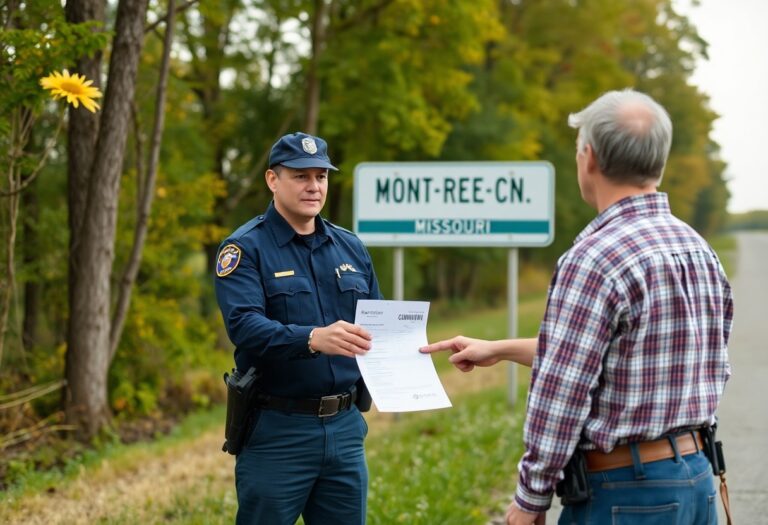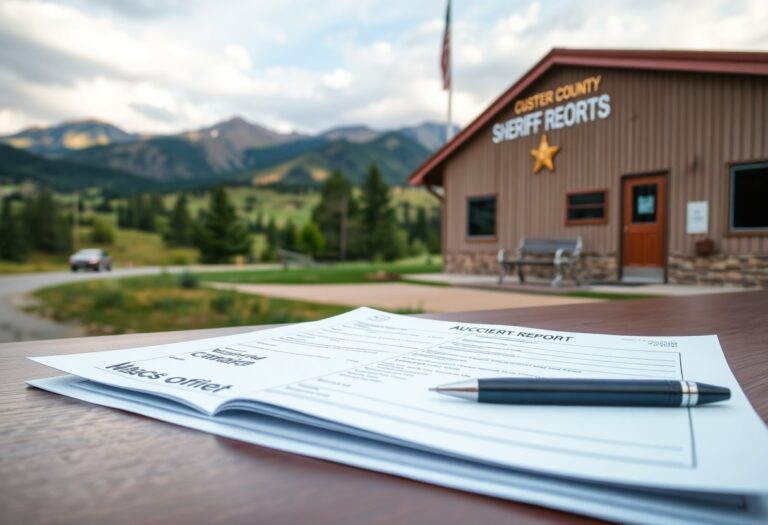With the unfortunate reality of car accidents, knowing how to access your accident report in El Paso County, Texas, can save you time and stress. This guide provides simple steps to retrieve vital information that you may need for insurance claims or legal purposes. By following these straightforward instructions, you’ll be well-equipped to handle the aftermath of a car accident efficiently and effectively.
Navigating the Basics of Car Accident Reporting in El Paso County
Understanding car accident reporting procedures in El Paso County simplifies the post-accident process. When involved in a collision, certain steps need to be taken, including notifying law enforcement, documenting the scene, and obtaining necessary forms. Each action you take helps lay the foundation for a successful insurance claim and potential legal proceedings down the line, ensuring that all relevant details are accurately captured from the outset.
Defining the Necessity of a Car Accident Report
A car accident report holds significant value following a collision, serving as an official document that outlines the specifics of the incident. This report provides a comprehensive account of the accident, including details on location, time, parties involved, and potential eyewitness statements. In many situations, having this report is imperative for resolving disputes and securing compensation for damages.
Who Can Access These Reports?
Access to car accident reports in El Paso County is available to specific parties involved in the accident, including drivers, passengers, and their legal representatives. Insurance companies often require these documents for processing claims and resolving liability matters. Some reports may also be accessible to attorneys or others who demonstrate a legitimate interest in the report.
This accessibility ensures that individuals directly affected by the accident can obtain the documentation necessary for insurance claims and legal matters. For instance, drivers involved in the crash need the report to file with their insurance company. Likewise, injured parties seeking legal advice often rely on these reports for their attorneys to build a case. Even curious third parties, such as potential witnesses, may access reports under certain circumstances, provided they can justify their request.
Step-by-Step Guide to Requesting Your Report
| Step | Description |
|---|---|
| 1 | Identify the Law Enforcement Agency involved in your accident. |
| 2 | Gather necessary information, such as your accident report number or date of the incident. |
| 3 | Choose your method of request: online, by mail, or in person. |
| 4 | Submit any applicable fees for report retrieval. |
| 5 | Wait for confirmation and receive your report through your chosen method. |
Online Access: Leveraging Technology for Convenience
Utilizing online resources streamlines the process of obtaining your car accident report. Various law enforcement agencies offer online portals where you can search for and request your report using basic details. This method allows you to fill out requests, make payments, and download your document without leaving home, saving you both time and effort.
In-Person Requests: What to Expect at Local Agencies
For those who prefer a face-to-face experience, visiting local agencies is an option. You will likely encounter knowledgeable staff who can guide you through the process, answer questions, and help you gather necessary paperwork. Bring valid identification and any charges that may apply, which typically range from $6 to $10 for a printed report.
When you decide to visit a local agency for your car accident report, anticipate a straightforward procedure. Most agencies boast designated areas for report requests, and you may have to complete a form detailing your accident. Be prepared for possible wait times, especially during peak hours, but rest assured that agency staff can assist with any challenges you might face in gathering your report efficiently. Having the accident date and report number ready will expedite your request significantly.
Understanding the Costs Involved
Accessing car accident reports in El Paso County comes with associated costs, which can vary based on numerous factors. You may encounter fees for obtaining copies, as well as potential charges for additional services or complications. It’s vital to budget for these expenses to avoid any surprises when requesting your report.
Fees for Obtaining Reports: A Breakdown of Charges
The fees for obtaining car accident reports in El Paso County typically range from $6 to $10 per copy, depending on the nature of the report and the method of request. You might also encounter additional charges for certified copies or expedited processing. Always check the latest fee schedule provided by the relevant authorities, as costs can fluctuate.
Waived Fees: Circumstances Under Which They Apply
In specific situations, you may qualify for waived fees while obtaining your car accident report. Typically, fees are waived for governmental agencies conducting official work or for individuals who can demonstrate financial hardship. It’s beneficial to inquire about these provisions when making your request to potentially save on costs.
Waived fees are often granted to those who can provide documentation proving their low-income status or show that they are experiencing financial difficulties. For instance, if you can present recent pay stubs or a benefits letter that confirms your situation, you may have your fees waived entirely. Ensure you discuss your circumstances during the request process; some agencies may require proof of hardship upfront, while others may have more flexible criteria. Familiarizing yourself with these provisions can lead to significant savings.
Common Pitfalls to Avoid When Requesting Reports
One major pitfall in accessing accident reports is failing to provide accurate and complete information. Incomplete requests can lead to significant delays or outright denial. Make sure to include all pertinent details, such as the incident date, location, and involved parties’ names. Also, double-check any identifying numbers or codes, as small errors can create processing hiccups.
Errors in Documentation: How to Prevent Delays
Minimize delays by thoroughly reviewing your documentation before submission. Ensure your name, address, and contact information are correctly entered; inaccuracies can impede the retrieval process. Additionally, verify that any requested forms are fully completed and signed. Double-checking your submission can save you time and frustration.
Timing Issues: When to Request for Timely Access
The timing of your request significantly impacts the speed at which you receive your report. Submitting your request as soon as possible after the incident can prevent complications. Generally, it’s ideal to wait for the initial investigation to conclude, which can take several days to weeks, but do not let too much time pass before reaching out to ensure you remain informed.
In El Paso County, timelines for accident report availability can vary based on the complexity of the case and the agency’s workload. Accident reports may take around 5-10 business days to be processed. You should aim to submit your request soon after you’ve gathered all necessary documentation. Delaying your request may lead to additional complications, such as forgotten details or loss of contact information for witnesses. Keeping track of your timeline helps you stay proactive and informed, ensuring you receive your report without unnecessary hold-ups.
Alternatives for Gathering Relevant Accident Information
Other than obtaining a formal report, you can explore various alternatives to gather imperative information from an accident. Victims may seek eyewitness accounts, photographs from the scene, or videos recorded by nearby surveillance cameras. Additionally, local news reports may feature your accident and provide valuable details. Exploring these alternative sources can supplement the official documentation and give you a more comprehensive understanding of what transpired during the incident.
Using Insurance Companies as Resources
Your insurance company often has access to extensive databases and reports concerning car accidents. By submitting a claim, you can request relevant documentation, including statements, accident reports, and any communication with other involved parties. They may even assign an adjuster to investigate the accident specifics, making your claims process smoother and less stressful.
Personal Documentation: Compiling Your Evidence
Compiling your own evidence is key to supporting your narrative and claim following an accident. Take detailed notes about the events leading up to the accident, any injuries sustained, and your interactions with law enforcement and medical personnel. Photographic evidence can be invaluable, so capture images of vehicle damage, any visible injuries, and the crash scene from multiple angles.
Creating a structured personal documentation system not only helps build your case but also keeps all pertinent information organized for efficient access. Start by keeping a dedicated folder with copies of all relevant documents like the police report, claim forms, medical invoices, and correspondence with insurance companies. *Including photos* taken at the scene will provide visual proof of conditions contributing to the accident. This compilation will aid in assuring that you present a compelling narrative, which can be critical should there be any disputes regarding fault or damages later on. Make a point to continually update your documentation as you receive new information or develop new communications in your case. This proactive approach can significantly influence the outcome of your claim.
Final Words
Presently, accessing your car accident report in El Paso County, Texas, can be a straightforward process when you follow the simplified steps outlined. You can obtain your report online or in-person, ensuring you have all necessary details and documentation ready. By understanding the procedure and required information, you can effectively navigate the system. This helps you stay informed about your rights and responsibilities following an accident, ultimately assisting you in managing the aftermath of the incident with confidence.













